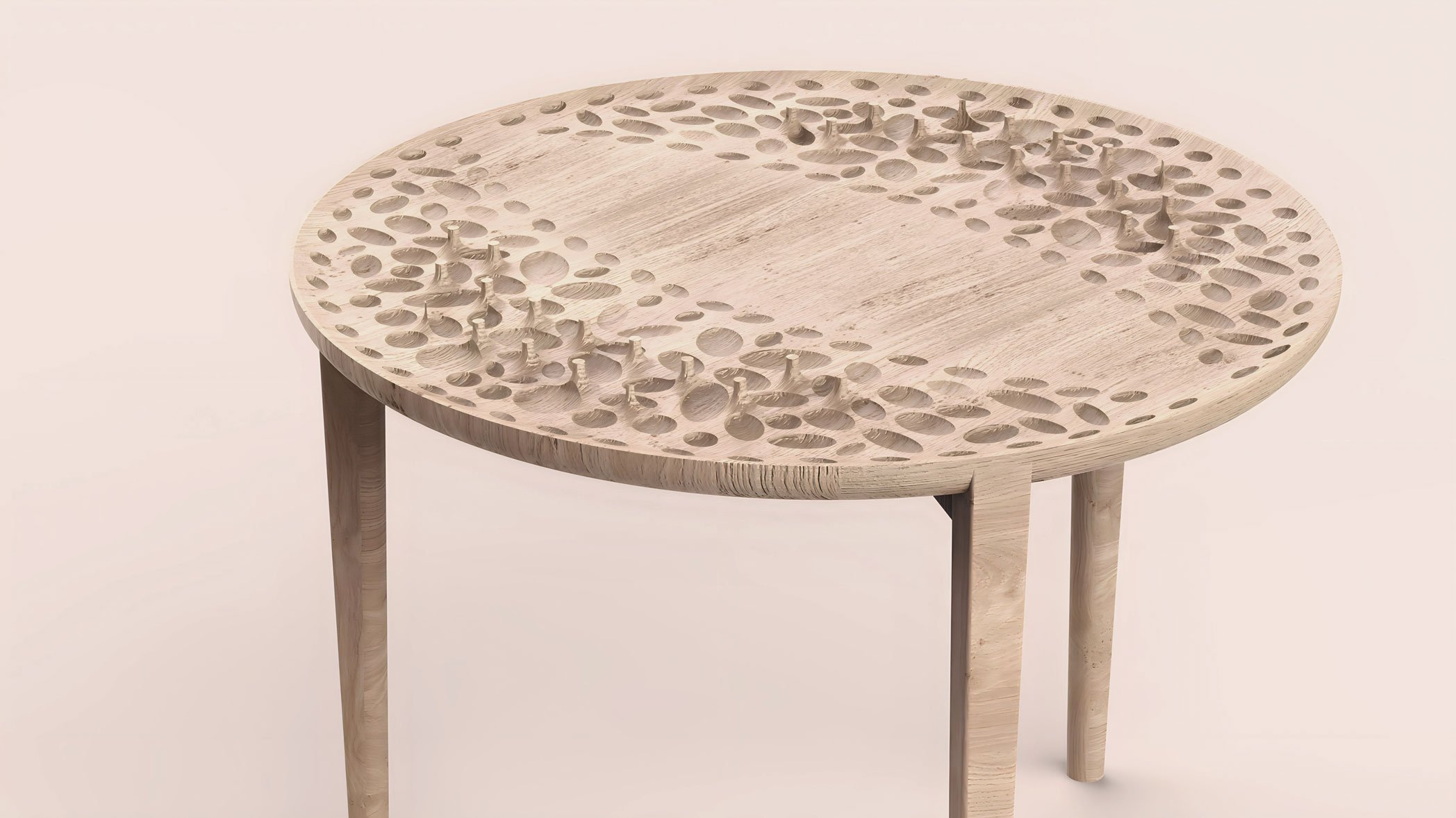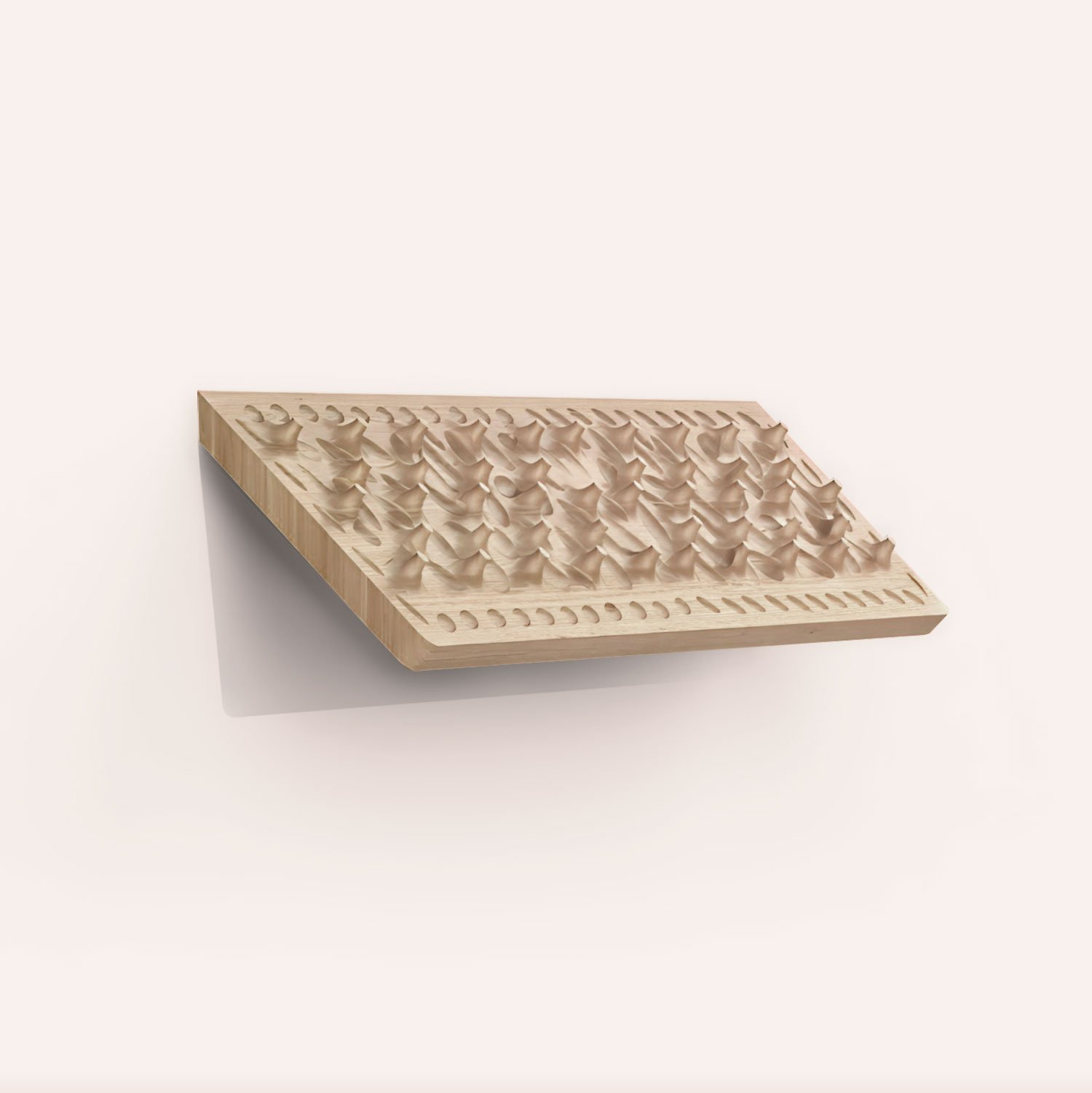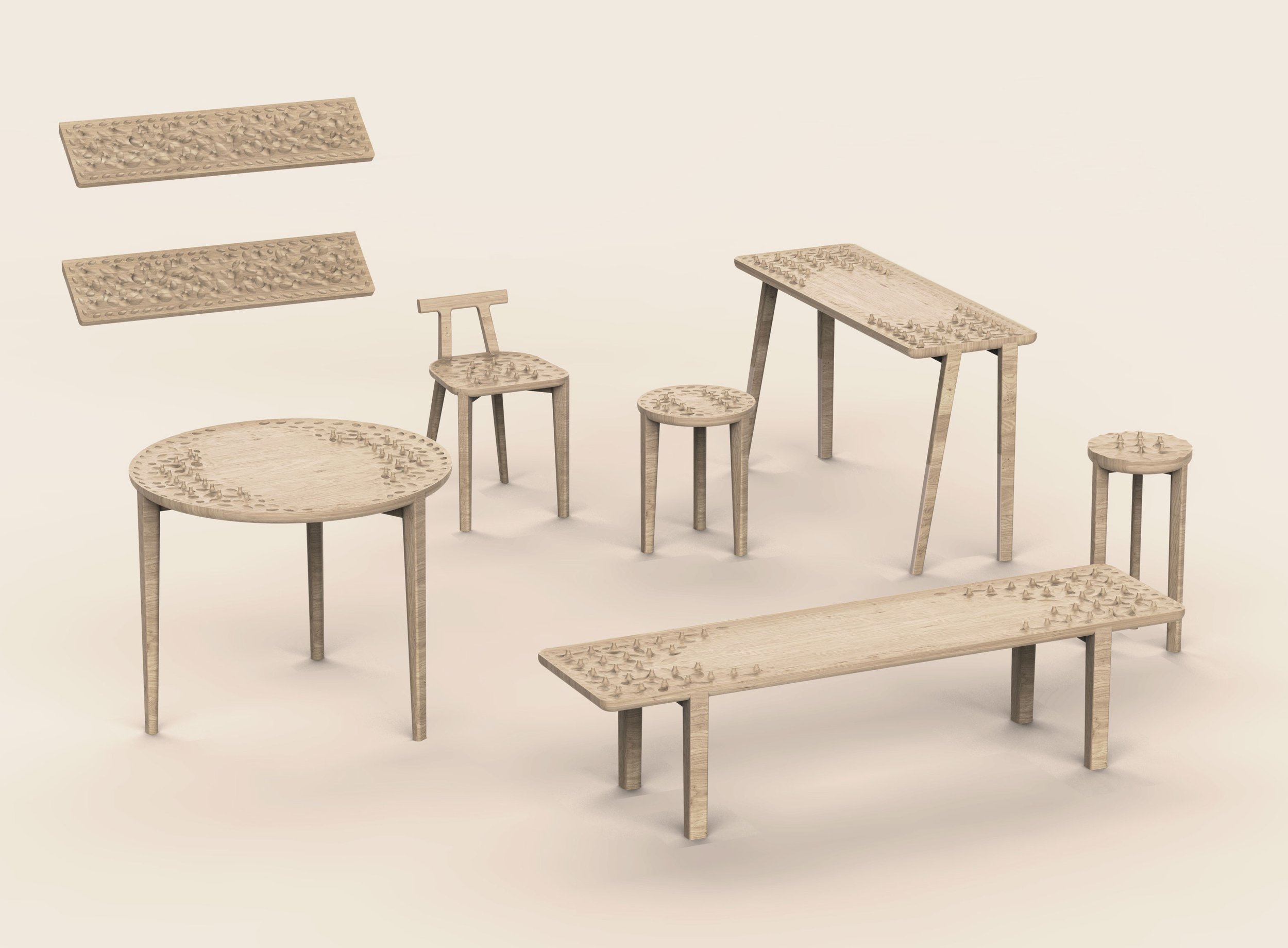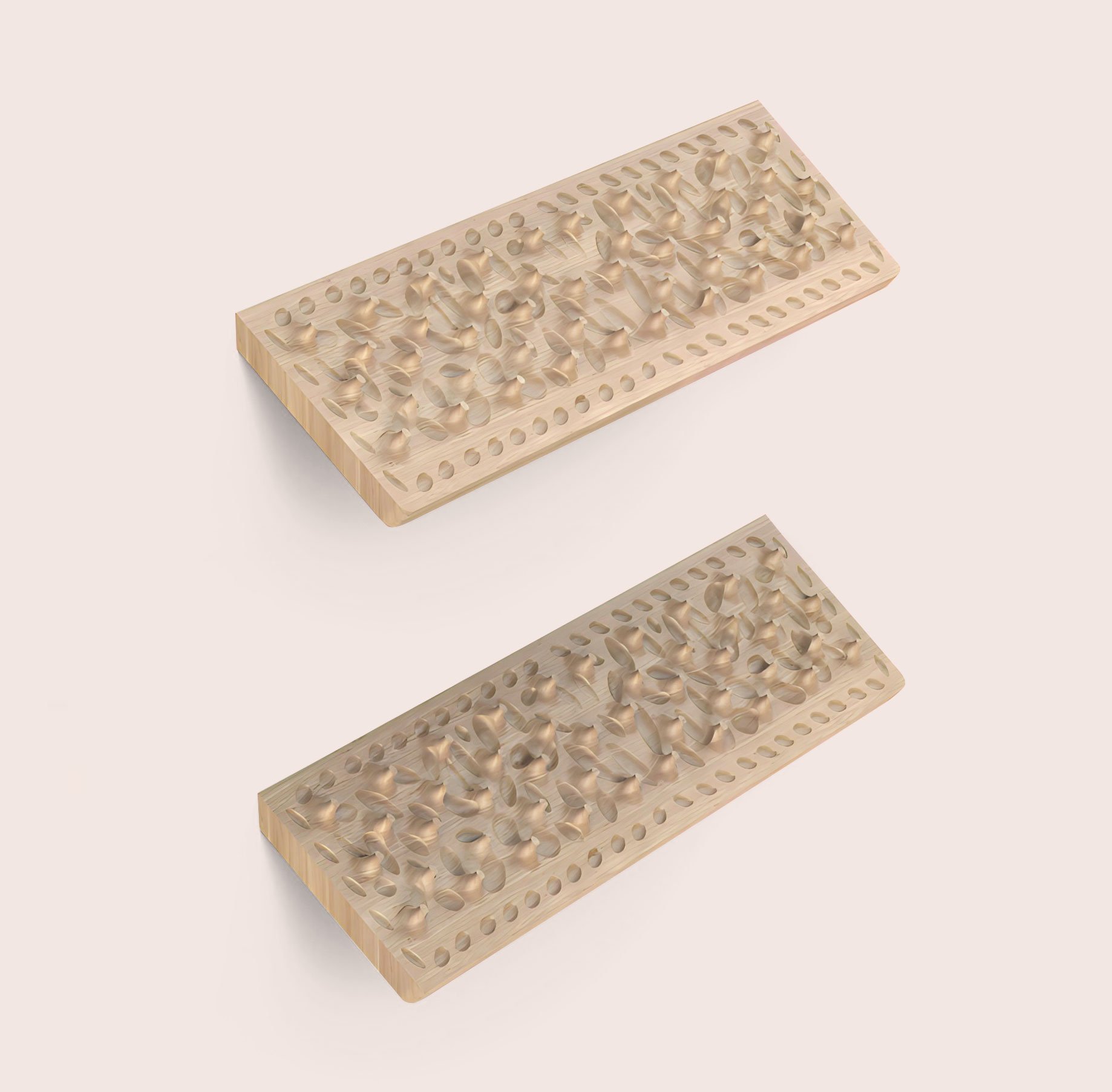 Image 1 of 5
Image 1 of 5

 Image 2 of 5
Image 2 of 5

 Image 3 of 5
Image 3 of 5

 Image 4 of 5
Image 4 of 5

 Image 5 of 5
Image 5 of 5






Perceptual Terrain Chair No. 1
In "Perceptual Terrain," the abstract miniature landscapes crafted into each piece transform the furniture into self-questioning devices, intentionally challenging traditional functionality. By making the surfaces uneven and seemingly unusable, Martin Lenclos encourages users to reevaluate their reliance on physical comfort and engage in deeper contemplation of their perceptions and judgments.
Lenclos focused on integrating nondual spiritual teachings with innovative design elements. The shapes protruding from the seats and tables are designed to disrupt conventional use, symbolizing the need to transcend physical and mental constraints. This design choice aims to dissolve distinctions between high and low, good and bad. By guiding users to explore these abstract forms, Lenclos creates a vertical dimension of awareness where the illusions of inequality fade, serving as a gateway to inner peace and spiritual unity.
In "Perceptual Terrain," the abstract miniature landscapes crafted into each piece transform the furniture into self-questioning devices, intentionally challenging traditional functionality. By making the surfaces uneven and seemingly unusable, Martin Lenclos encourages users to reevaluate their reliance on physical comfort and engage in deeper contemplation of their perceptions and judgments.
Lenclos focused on integrating nondual spiritual teachings with innovative design elements. The shapes protruding from the seats and tables are designed to disrupt conventional use, symbolizing the need to transcend physical and mental constraints. This design choice aims to dissolve distinctions between high and low, good and bad. By guiding users to explore these abstract forms, Lenclos creates a vertical dimension of awareness where the illusions of inequality fade, serving as a gateway to inner peace and spiritual unity.
In "Perceptual Terrain," the abstract miniature landscapes crafted into each piece transform the furniture into self-questioning devices, intentionally challenging traditional functionality. By making the surfaces uneven and seemingly unusable, Martin Lenclos encourages users to reevaluate their reliance on physical comfort and engage in deeper contemplation of their perceptions and judgments.
Lenclos focused on integrating nondual spiritual teachings with innovative design elements. The shapes protruding from the seats and tables are designed to disrupt conventional use, symbolizing the need to transcend physical and mental constraints. This design choice aims to dissolve distinctions between high and low, good and bad. By guiding users to explore these abstract forms, Lenclos creates a vertical dimension of awareness where the illusions of inequality fade, serving as a gateway to inner peace and spiritual unity.






















